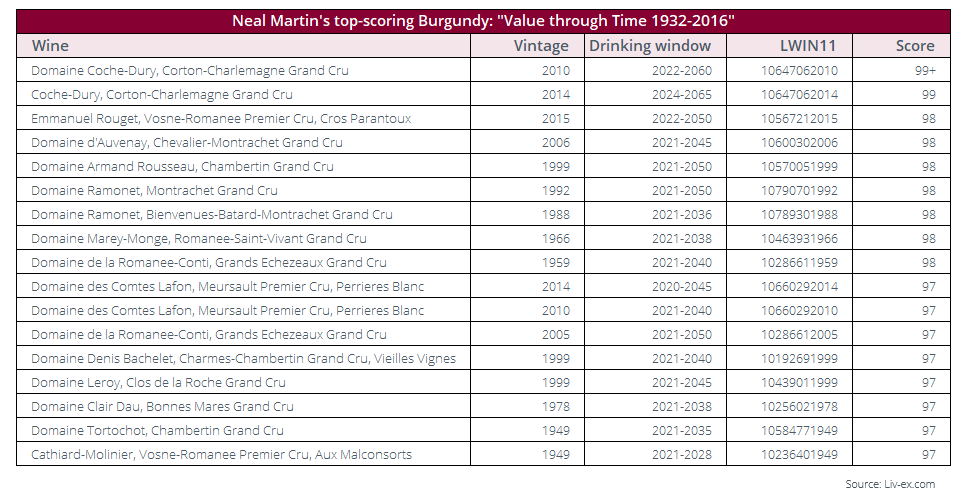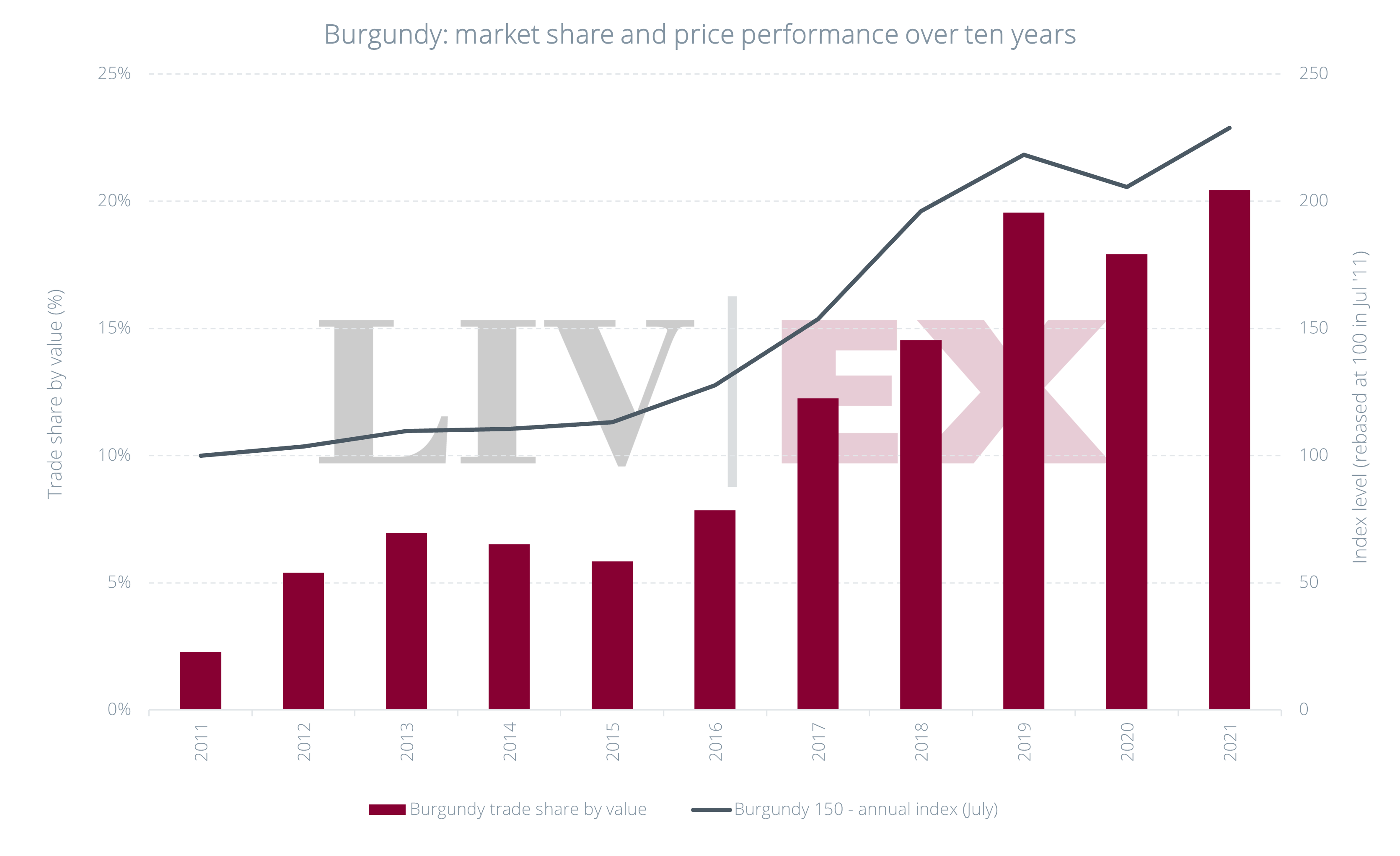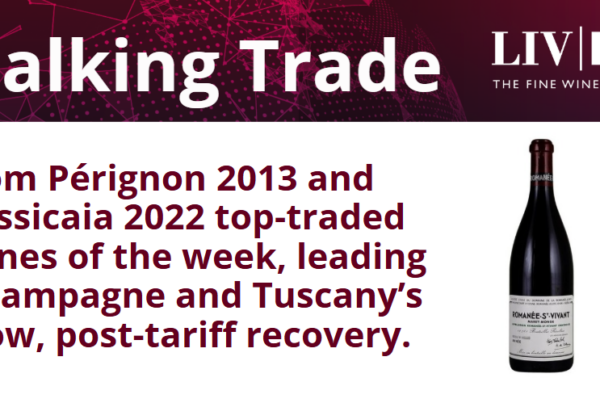- Neal Martin releases new Burgundy scores, and puts price hikes into a historical perspective
- The secondary market for Burgundy continues to expand, as the region heads towards a new peak in 2021
“The value of Burgundy has changed through history, but that change has always been the one constant.” – Neal Martin
The critical view 
Neal Martin (Vinous) has released various new Burgundy scores, spanning the vintages 1932-2016. The wines have been tasted over the course of a few years, and “come from a variety of sources”, ranging from “dinners in restaurants from Mayfair to Kowloon Bay” to bottles drunk at his home.
Martin’s latest report discusses Burgundy’s changing value through time and puts its price appreciation into a historical and socio-economic perspective. Martin observes that, “the value of Burgundy’s top wines is no longer measured solely in terms of pleasure in consumption and sharing, but also in pleasure of ownership”.
He hopes that his round-up of mature Burgundy “has provided an update on a bottle you might own, or offered some vicarious enjoyment”. His top-scoring wines, along with recommended drinking windows, can be seen in the table above.
Domaine Jean-François Coche-Dury Corton-Charlemagne Grand Cru 2010 leads, with a score of 99+ points. For Martin, it was, “utterly profound”. “Everything here is perfectly in place,” he added. The wine currently has a Market Price of £56,268 per 12×75.
In his report, Martin comments that due to high prices, “an entire generation of potential Burgundy-lovers will be priced out of their passion,” which, “sits uncomfortably with many growers”.
Martin notes, however, “that there are still plenty of alternatives both within and outside the region”. From aged Beaujolais, the introduction of premier cru Pouilly-Fuissé, young winemakers in Chablis and the Côte Chalonnaise, “excellence within Burgundy is far more widespread than even a decade ago, and the emerging wines can be just as worth cellaring”.
The secondary market view
The Burgundy secondary market too has undergone a massive expansion. The number of distinct wines (LWIN11) trading is tenfold that of a decade ago.
As we observed in our report Burgundy: A journey of discovery , “the extraordinary 10-year performance of Burgundy’s legendary labels (a fine wine buyer’s ultimate destination) has encouraged collectors to delve deeper into the region in search of value, thus allowing smaller regional domaines to shine”. The full spectrum of village and commune level wines is now seeing increased activity.
Burgundy is also the outright leader when measured by average trade price and long-term price performance of its wines. Burgundy’s elite growers represent the highest entry point into the fine wine market of any region and Burgundy is the top performing region since the launch of the Liv-ex regional indices in 2003.
Year-to-date, the Burgundy 150 is the best performing regional index, up 9.8%. In terms of market demand, the region has shown no signs of stopping. So far in 2021, it has accounted for 20.4% of trade by value – an all-time high. Will Burgundy reach a new peak this year?
Our extended reports on Burgundy:
January 2021: Burgundy – A journey of discovery
January 2020: Burgundy – After the peak
January 2019: Burgundy – in the spotlight
February 2018: Burgundy – The market’s favourite tipple




